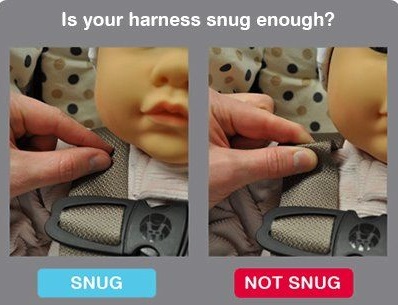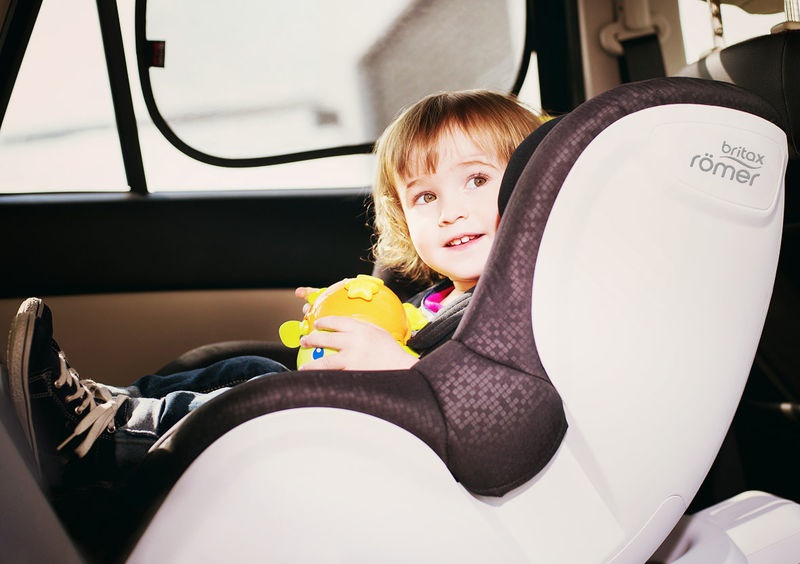Child seat safety is a no-brainer; a car seat is the single most important piece of safety equipment you will buy to protect your child. Moreover, it’s no good having the best car seat money can buy, if you install the seat incorrectly. At The Stork Exchange we understand how important car seat safety is so we always install our seats for our customers. There’s no room for mistakes here, yet we do see them. Here are 6 common mistakes any parent can make, but the good news is, they are easily avoidable. Warning; this doesn’t always make for easy reading!
Mistake #1: Installing the car seat too loosely…
If you can wiggle the seat more than an inch forward, or side to side, you haven’t pulled enough slack off the seat belt. Consequently, in an accident the seat can crash into the back of the front seat causing serious injuries to the head and face.
Fast fix: This is easy enough to resolve, but we find two adults are better than one in this situation. When installing a seat, place a knee into the forward facing seat, or an arm across a rearward facing seat. Press the seat down with all your weight. The second adult then pulls the slack off the belt, tightening it as much as possible. Finally, ensure you lock off the belt lock on the seat.
Mistake #2: Threading the seat belt through both shoulder locks….
We see this a lot. It’s where the seat belt threads horizontally across the child seat through both shoulder locks. There are belt guides on both sides of the car seat because it depends which side of the car you install the seat. They are not there to be used at the same time.
Fast Fix: Thread the shoulder strap through the top guide on one side only. Run it diagonally down to meet the waist strap. Then clip in to the buckle on the opposite side to the shoulder lock.
Mistake #3: The harness is too loose.

Parents often worry the straps are too tight and dig into the child’s shoulders. Of course, the harness should not be so tight that it is uncomfortable for the child. However, you must ensure to pull the harness straps tight enough. And preferably take off your child’s coat!
Fast Fix: Try the pinch test – if, after you’ve tightened your child into the car seat, you can still pinch the fabric of the harness straps between your fingers, the harness is too loose.
Mistake # 4: Moving up a car seat stage too soon…
This is a common but potentially dangerous mistake to make. The trick here is to remember it goes by weight AND height. Ideally, experts recommend you keep your child rearward facing for as long as possible simply because it is safer. Rearward facing, the car seat absorbs the initial force of impact and the child is protected by the seat.
From Rearward to Forward
Parents are often understandably concerned when their child’s legs are folded against the back seat of the car. So long as your child’s head is still enclosed by the child seat, and their weight is still stage appropriate for the seat, a broken leg is preferable to a broken neck. Facing forward, a child is propelled forward, therefore at greater risk of head or neck injuries, or serious injury to their internal organs.
From Child seat to Booster…
Children between 15kgs and 36kgs (40lbs and 80lbs) and up to 4’9″ tall, move into a high back booster seat. If you move a child up too soon there are multiple risks in a collision. Primarily, they are not heavy enough to trigger the seatbelt … enough said.
Or worse booster cushion!
High back booster seats cover the same weight and height category as a booster cushion, except a highback booster is safer. High back boosters have a seat belt guide to ensure the seatbelt is positioned correctly. Moreover, these seats have head and spine protection, something a cushion doesn’t offer. We know ‘big kids’ don’t like to be in a car seat but trust us, it is worth the argument every time!
Fast Fix: Keep your child in the appropriate seat until they reach both weight and height guidelines. The top of the car seat should always protect and cover your child’s head. When the car seat exposes the tips of their ears, only then is it time to move up. If your child is tall but light, there are great ‘in-between’ seats, such as Joie Bold, which is harnessed to a heavier weight.
Mistake #5: Harness straps through the wrong slots
We see this a lot – the harness straps aren’t adjusted properly as the child grows up through the seat. Sometimes the strap feeds through the fabric cover at the correct slot, but then jumps up/down to feed through the slot in the back of the car seat. Child seats have three or four sets of harness slots. The lower two sets are for the rear-facing position, and the top sets are for the forward-facing position.
The danger: When the child faces forward, a harness in the lower slots can break through the seat during a collision. Only the uppermost slots have the extra reinforcement necessary to keep the harness secure in a collision.
Fast fix: Always check the instructions or ask an expert to find out which slots are for what. As a general rule, on rearward facing seats, harness straps thread through at, or just below the child’s shoulders. For forward facing seats the straps should thread through the seat at their shoulders or just above. Ensure it threads through the fabric cover and the child seat at the same place.
Mistake #6: Positioning the Seat belt incorrectly on a booster child seat.
Allowing your older child to buckle their own seat belt it fine. However, you should always glance back to check the belt is positioned correctly. Sometimes kids feel uncomfortable and move their arms out over the seat belt, or push the belt behind them. The seat belt itself is potentially dangerous in a collision. You want to ensure it is not too high across their soft tummies or too close to their neck. Most high back booster seats have colour coded guides to show you where to position the seatbelt.
Fast Fix: Always ensure the seatbelt goes through the feed at their shoulder and that the ‘waist seatbelt’ crosses their bodies on their hip bones and not their abdomen. Teaching your child where the seatbelt needs to go will ensure they position it correctly every time.
At The Stork Exchange we hire and install car seats and baby equipment to make travel easier for parents with small children. Safety is our priority and we share lots of tips and how to’s on our website and facebook page. Here’s a link to ‘6 tips on how to install a child seat safely with a seatbelt’… very handy skill if you hire cars alot!

